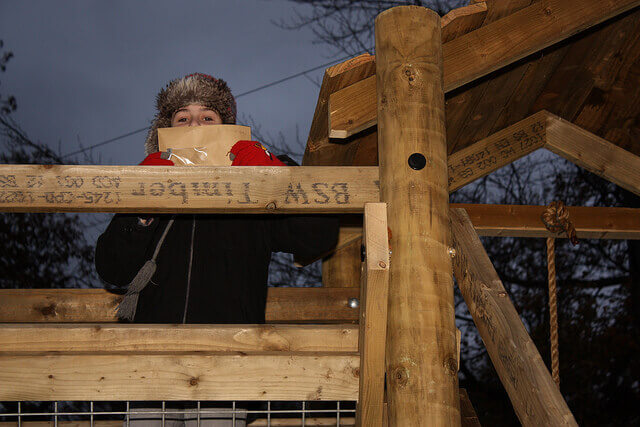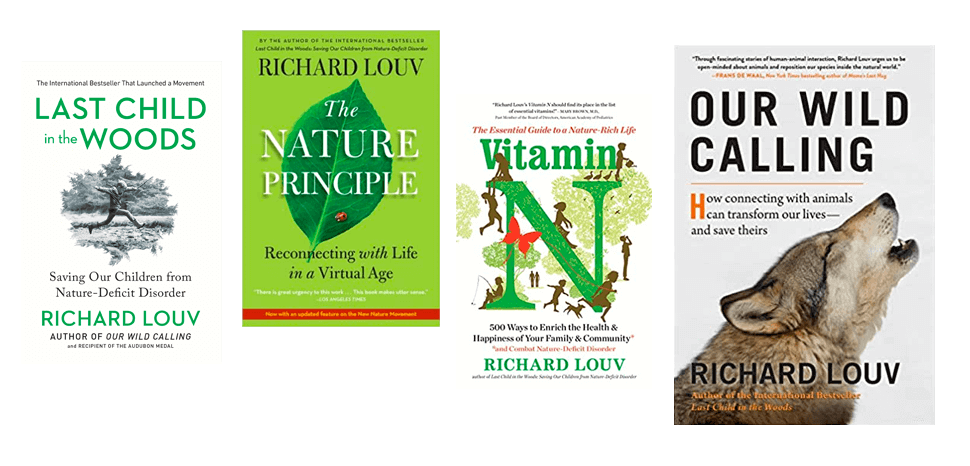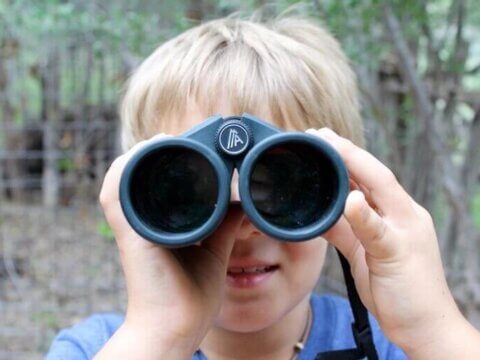DON’T TEAR DOWN THAT FORT! Ten lessons (and more) that kids learn from building their own tree houses and forts — if adults let them
From where I grew up, outside Kansas City, Missouri, the town of Lee’s Summit was just a stone’s throw. Or maybe a tornado’s toss. In the woods between the towns, my friends and I built our forts and tree houses.
This week, KCTV News reported about a group of neighborhood kids in Lee’s Summit who did the same, but “learned a hard lesson about city codes…” These kids had built a terrific fort on a vacant lot, using scrap lumber left over from the construction of surrounding homes. The same way generations of children had done before. Responding to an anonymous complaint about the fort, building inspectors sent a small bulldozer to demolish the fort, despite a written plea made by some of the youngsters:
Dear City, Please do not tear this house down! We have all worked for almost a year on it, for hours and hours. We have all had fun climbing on it, camping in it, having picnics in it. Many happy memories were forged here. We all hope that it won’t be torn down. So please don’t tear it down!”
The fault herein does not lie with city officials – they’re just doing their jobs — but with the codes and restrictions, common throughout the nation. These spring from two public and private mandates: be neat; be safe. Never mind another kind of danger: the stunting of creativity and inventiveness and the kind of risk-taking necessary for healthy development and true learning.

In “Last Child in the Woods,” I referred to this trend as the criminalization of natural play. When researching that book, I asked my friend, architect Alberto Lau (who at that time was also the construction scheduler for several new schools in San Diego, California) this question: What did we learn by building those tree houses and forts? Here’s part of his intriguing list:
- You learned the most common sizes of lumber, 4×8’ sheets of plywood, and 2×4” studs; also, about the sizes of nails.
- You probably figured out that diagonal bracing stiffened the structure, whether the bracing was applied at a corner or to hold up the platform or floor of the tree house.
- You probably learned the difference between screws and nails.
- You learned about pulleys.
- You learned that framing must strengthen openings such as windows or trap doors.
- You probably learned to slope the roof in imitation of real homes, or because you were beginning to understand that a slope would shed rain.
- You probably learned to place the framing narrow side up; you were beginning to learn about “strength of materials,” a subject taught in engineering schools.
- You learned about measurement and three-dimensional geometry.
- You learned how the size of your body relates to the world…the height from which you could safely jump, etc.
The list went on. “One more thing,” Alberto added, “You probably learned from your failures more than from success.” And, “you also learned, by practicing, one of the essential principles of engineering: you can solve any large or complex problem by breaking it down into smaller, simpler problems.”
By the way, Alberto’s daughter, Erin Lau, grew up building tree houses in the canyon behind her house, before the community association of her neighborhood started tearing them down.
Today, as an adult, she credits those experiences with influencing “the way I see the built world.” She became a landscape architect “because of the pressing need in this world for the reintroduction of the natural landscape into the unwelcoming built environment.”
And she asks. “Why can’t mini-ecosystems be introduced into the middle of the city? Can we design parks so that they are as chaotic as nature, yet safe for an evening walk?” Those are great questions. They deserve to be broken down into smaller, simpler problems. Over to you, dear readers.
Erin now lives in Seattle. A couple of years ago, my wife, Kathy, and I hired her to redesign our San Diego backyard as a native landscape. What she created now enriches the lives of several species, including our own.
-
Network News
POLICY UPDATE: Policy and advocacy for the children and nature movement
-
Voices
Binoculars, bald eagles and my journey as a Black birder
-
Richard Louv
THE WONDER BOWL: Ten Spring and Summer Nature Activities for Kids and Adults
-
Network News
Minneapolis Spotlight: The promise and possibilities of parks for youth
-
Voices
Why nature is my motherhood ally







Commentaries on the C&NN website are offered to share diverse points-of-view from the global children and nature movement and to encourage new thinking and debate. The views and opinions expressed are those of the author(s) and do not necessarily reflect the position of C&NN. C&NN does not officially endorse every statement, report or product mentioned.